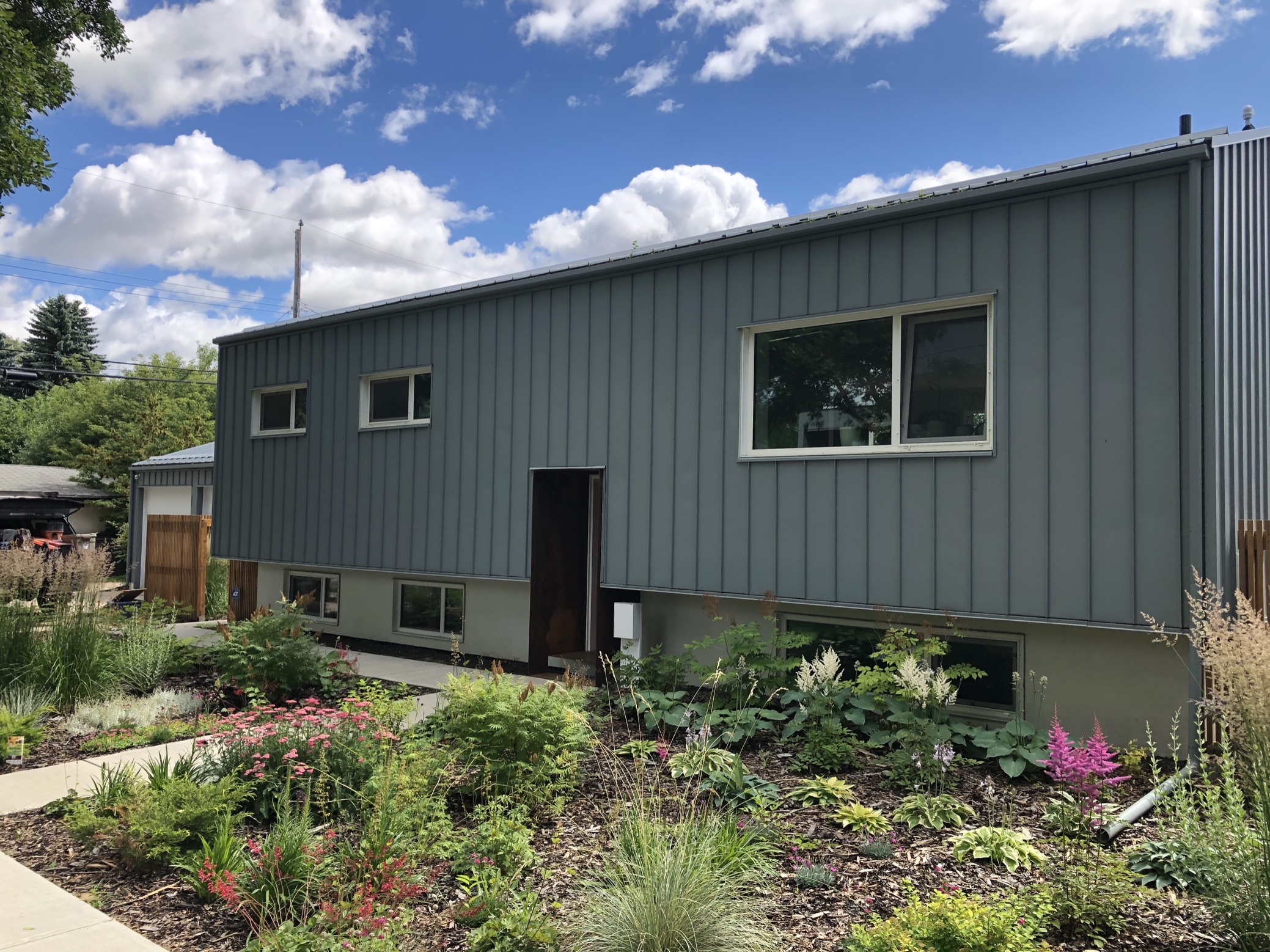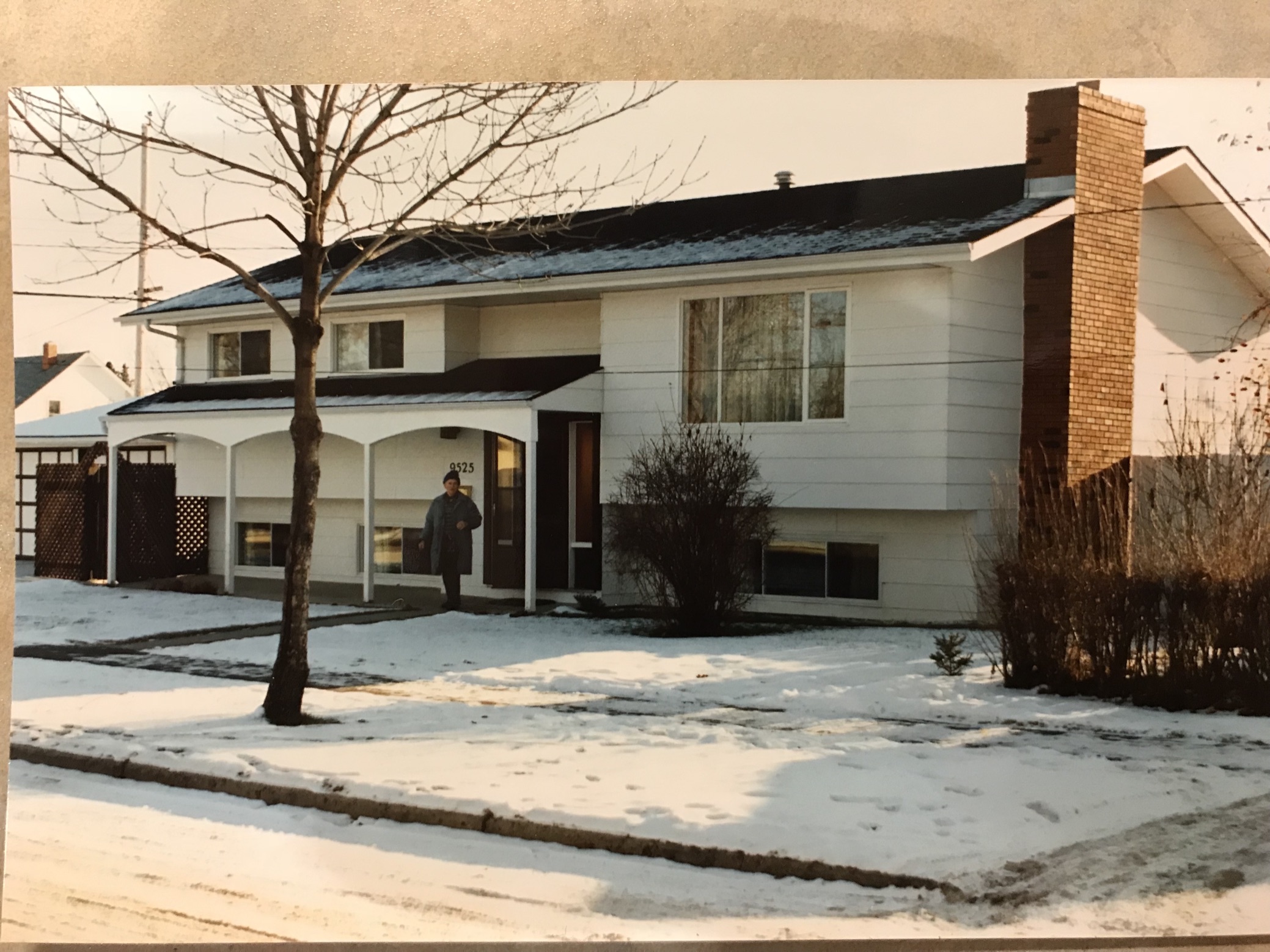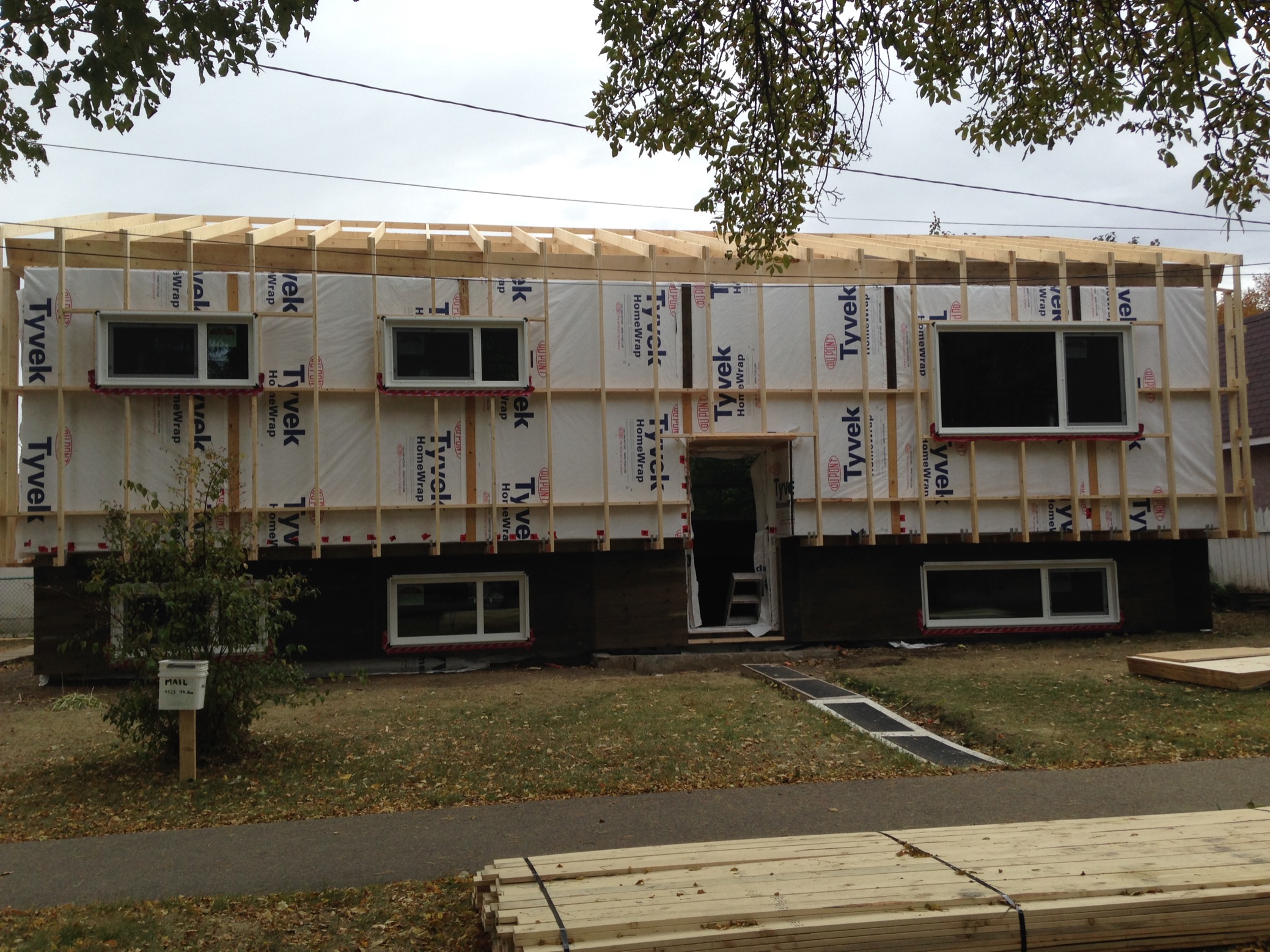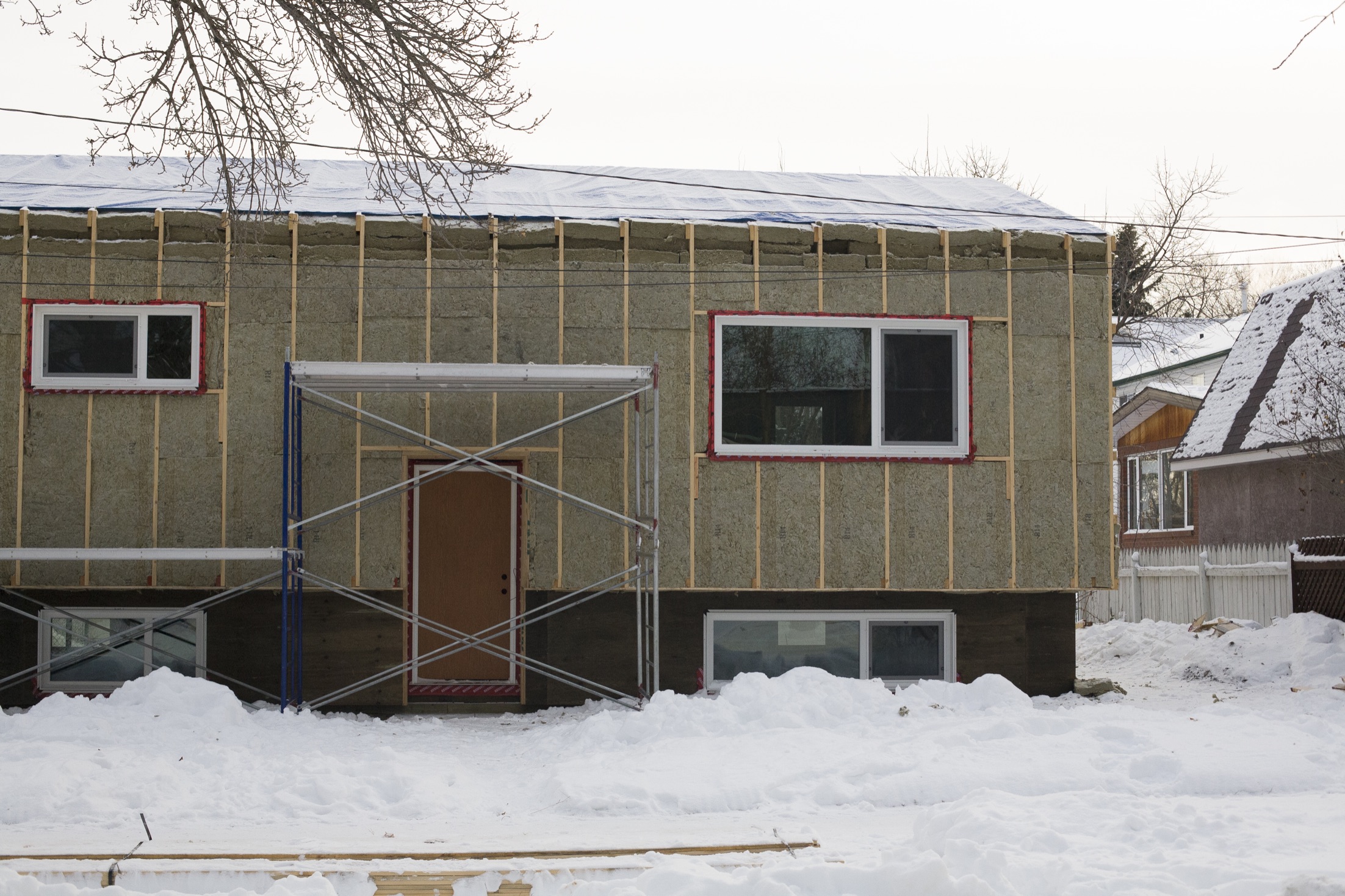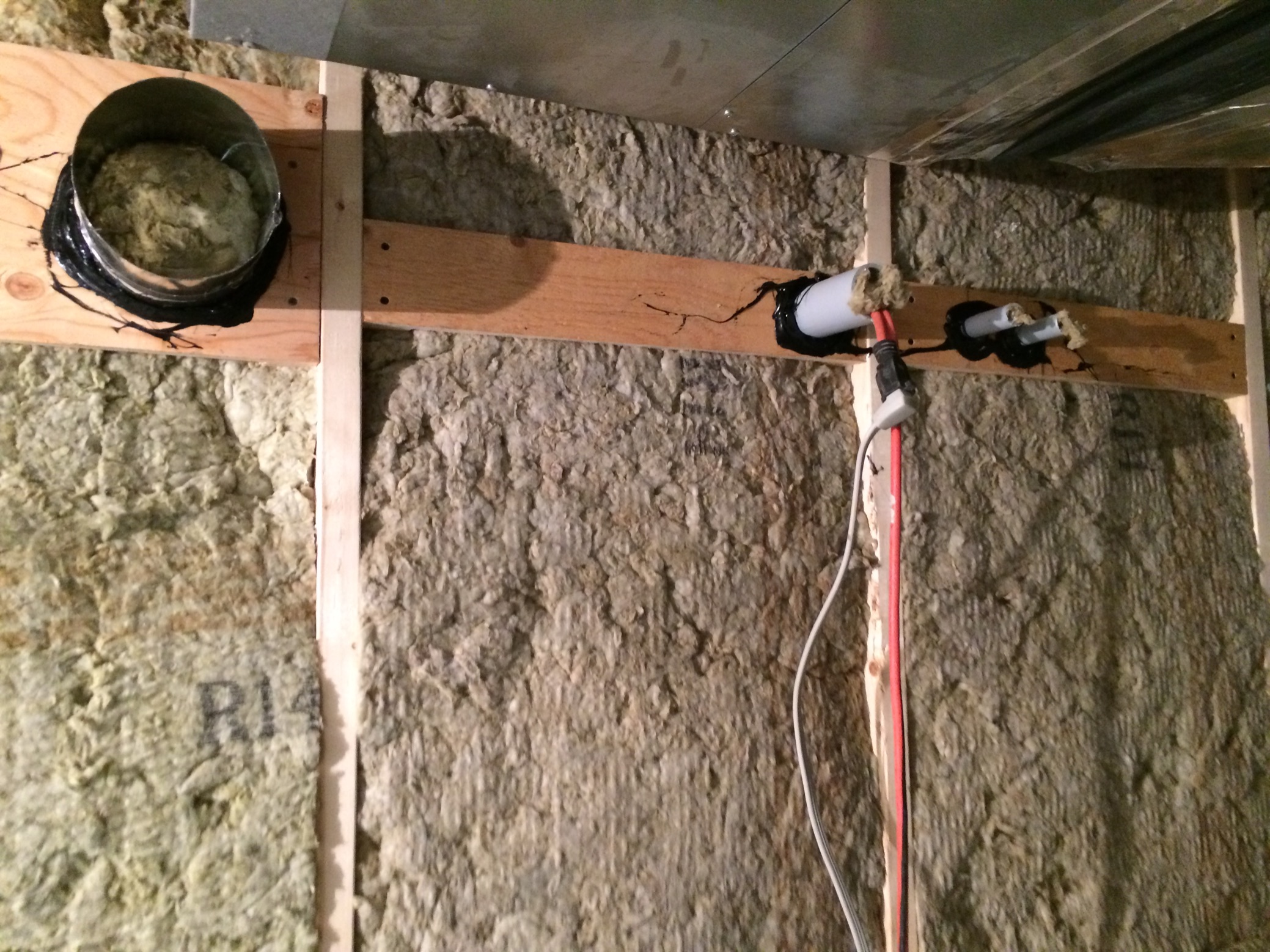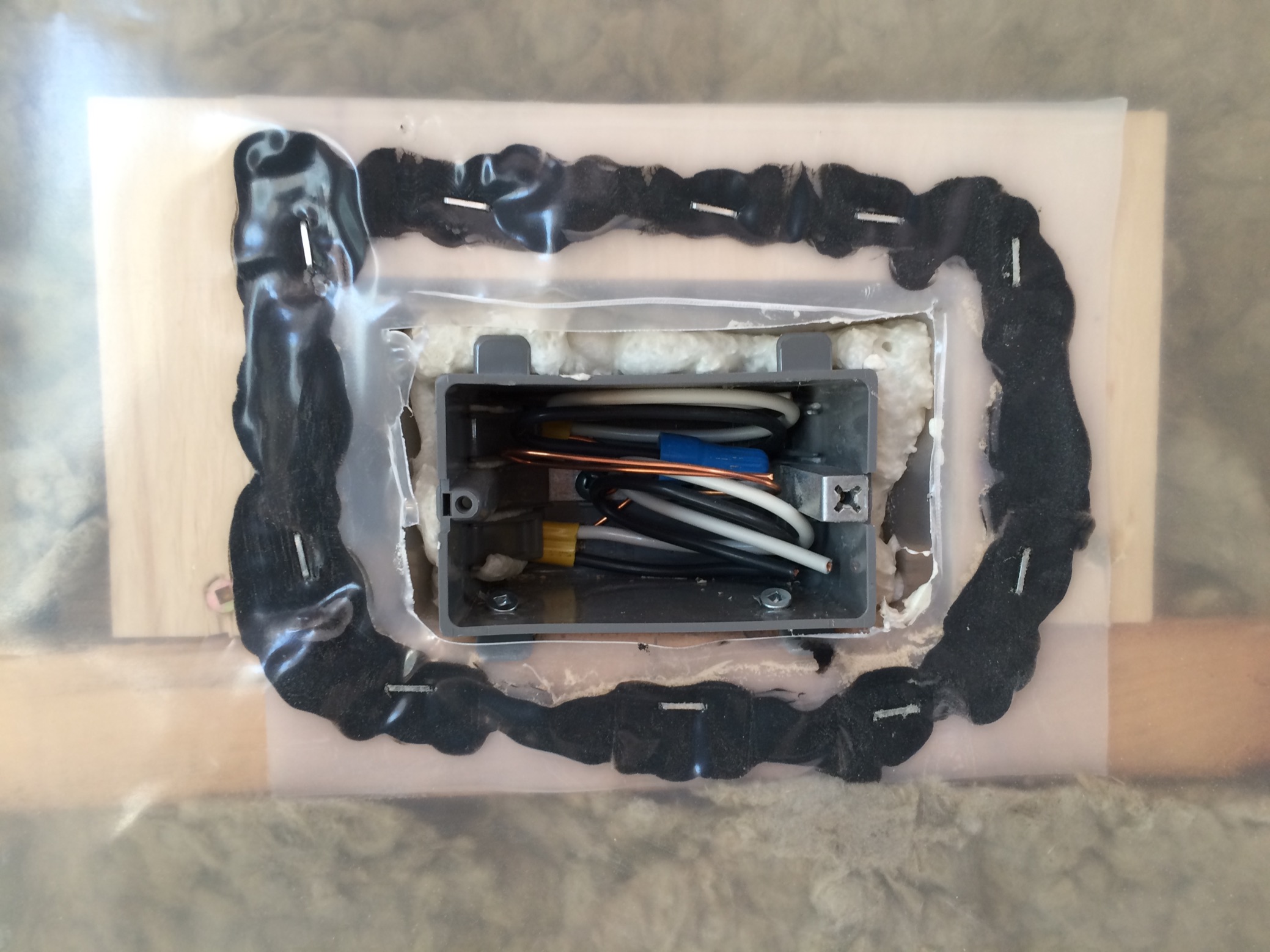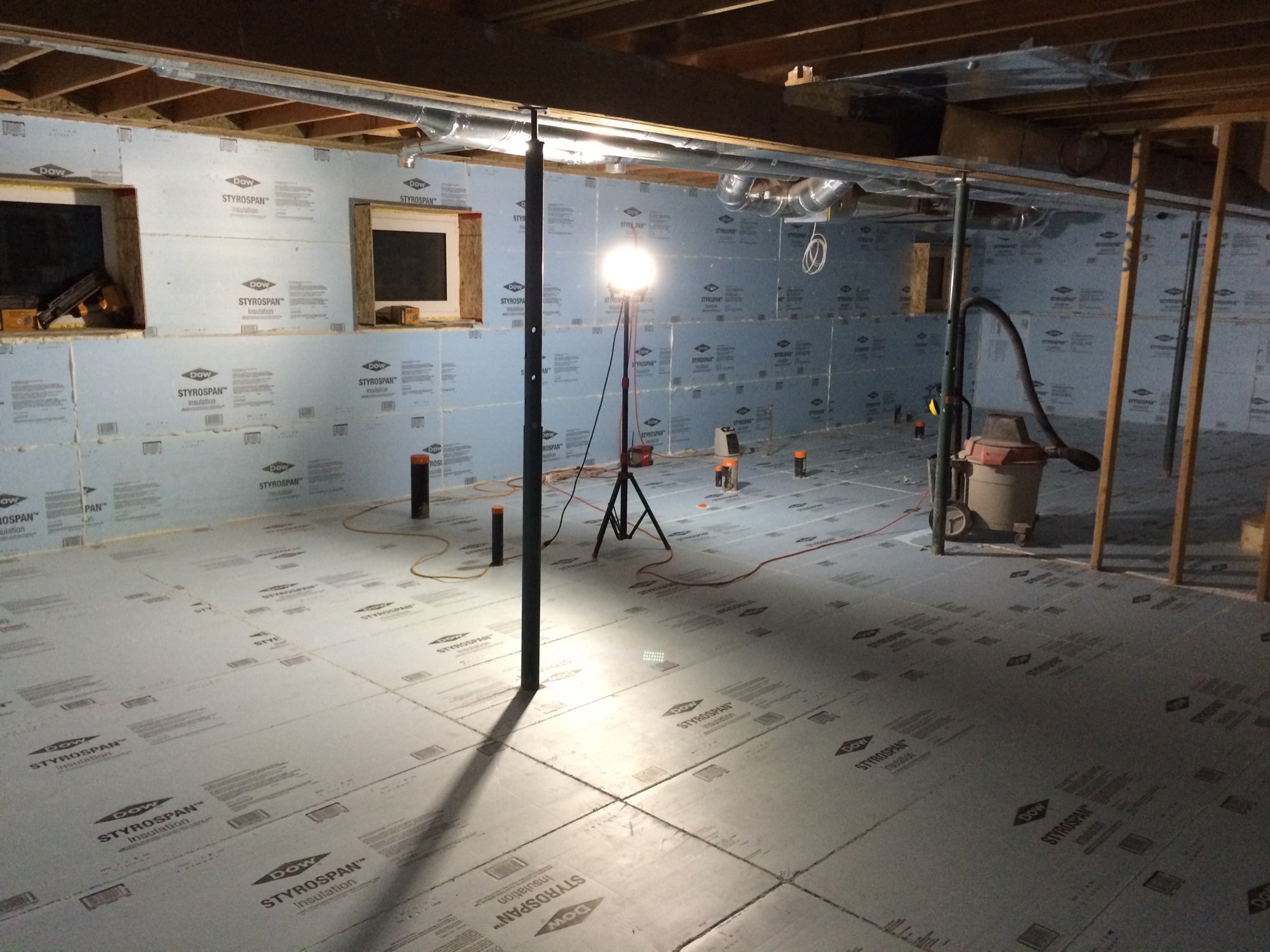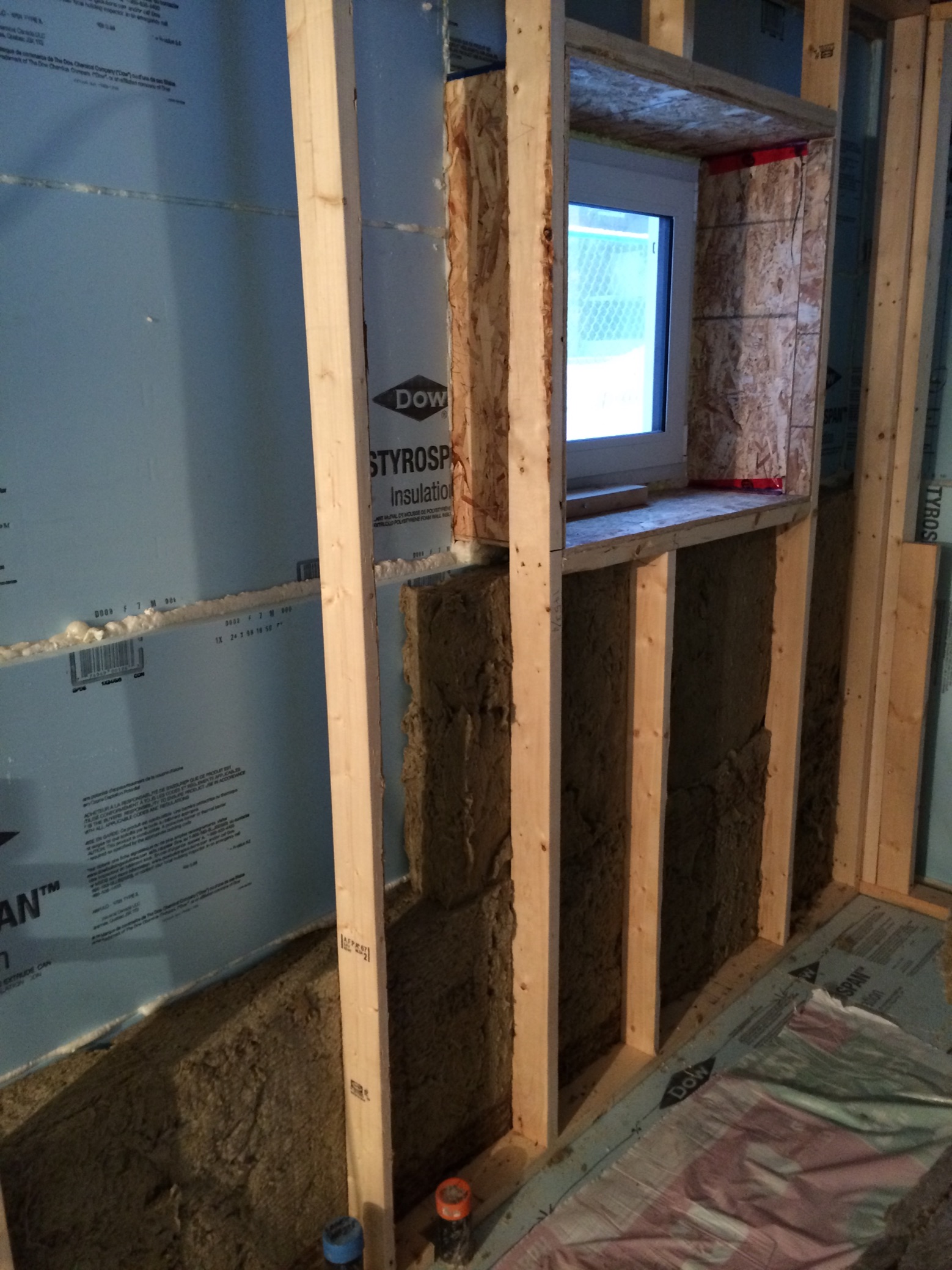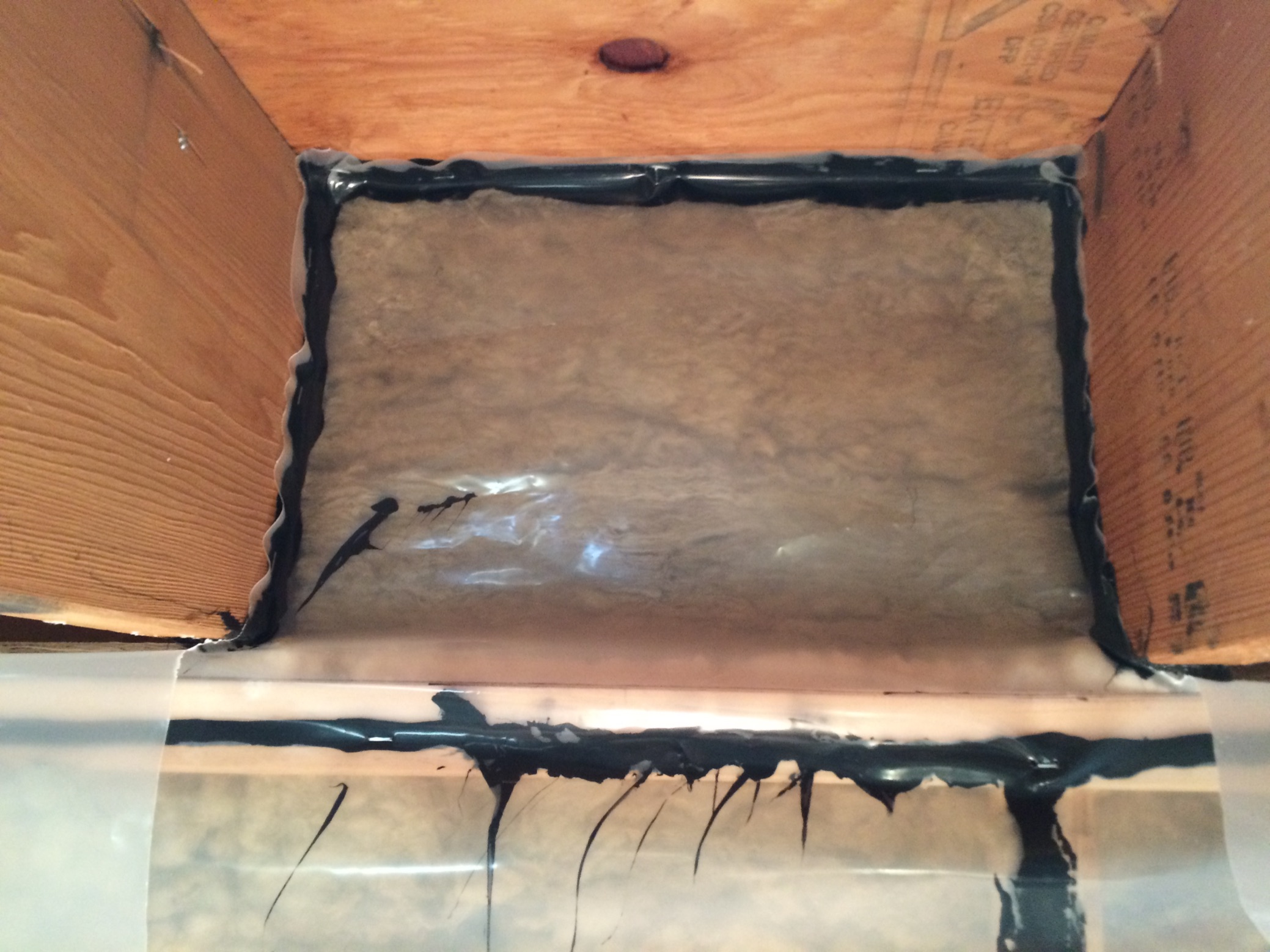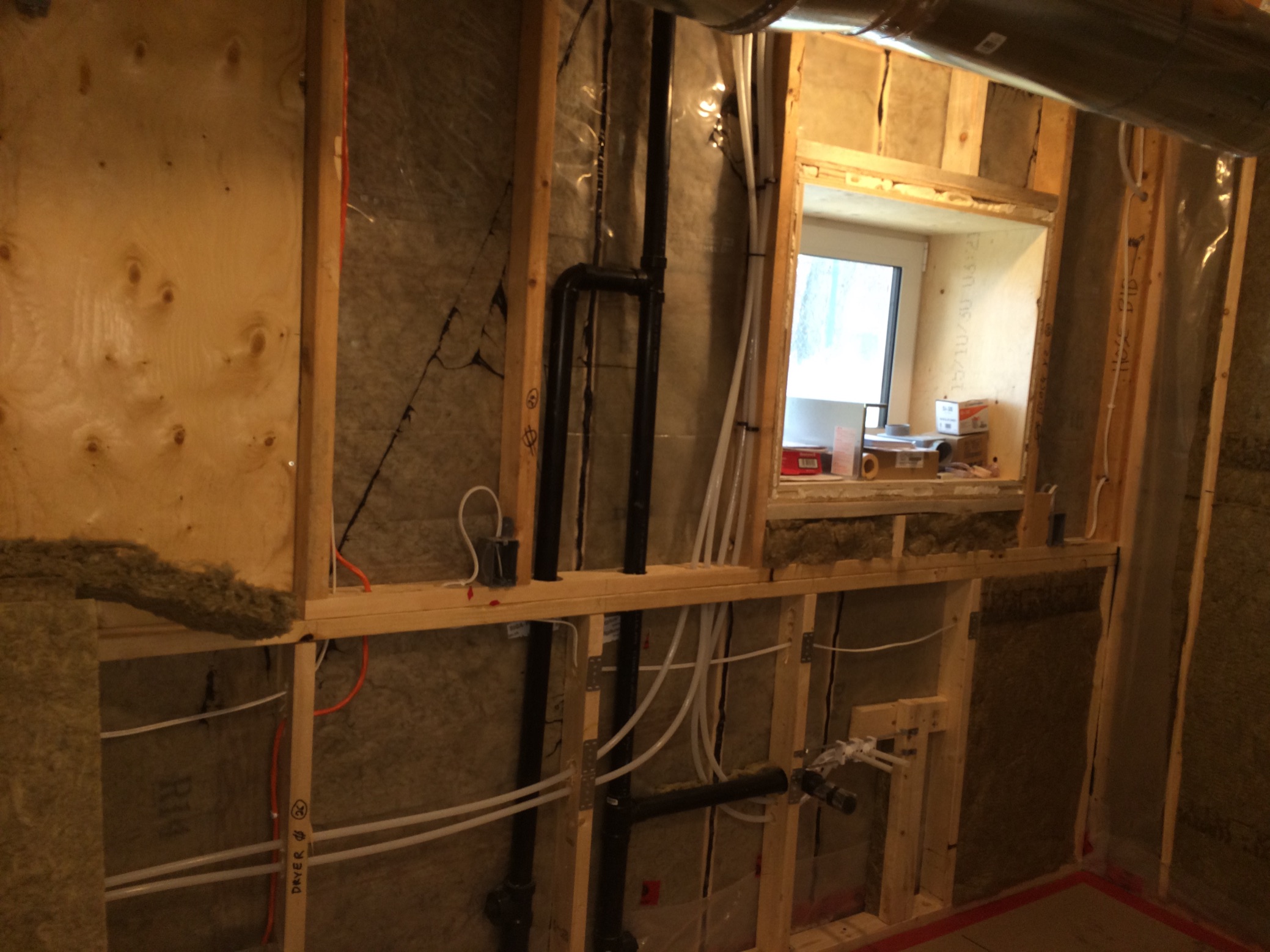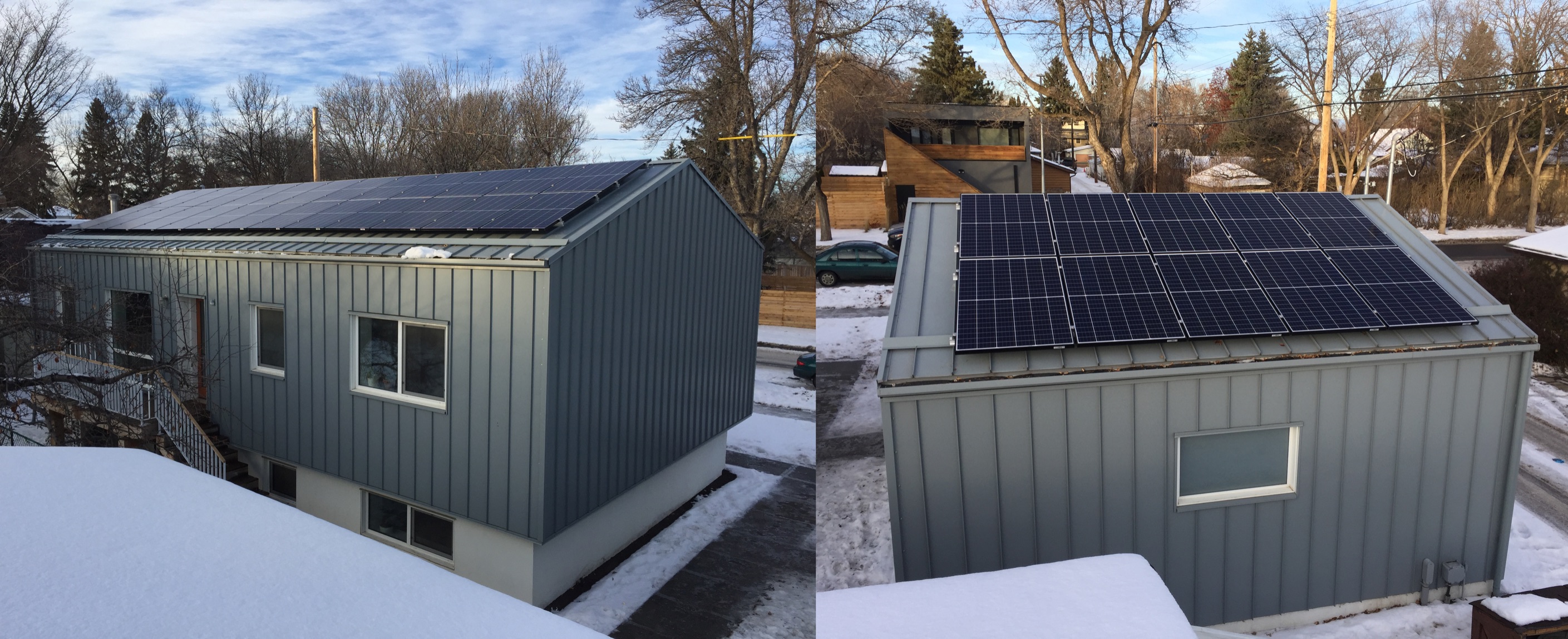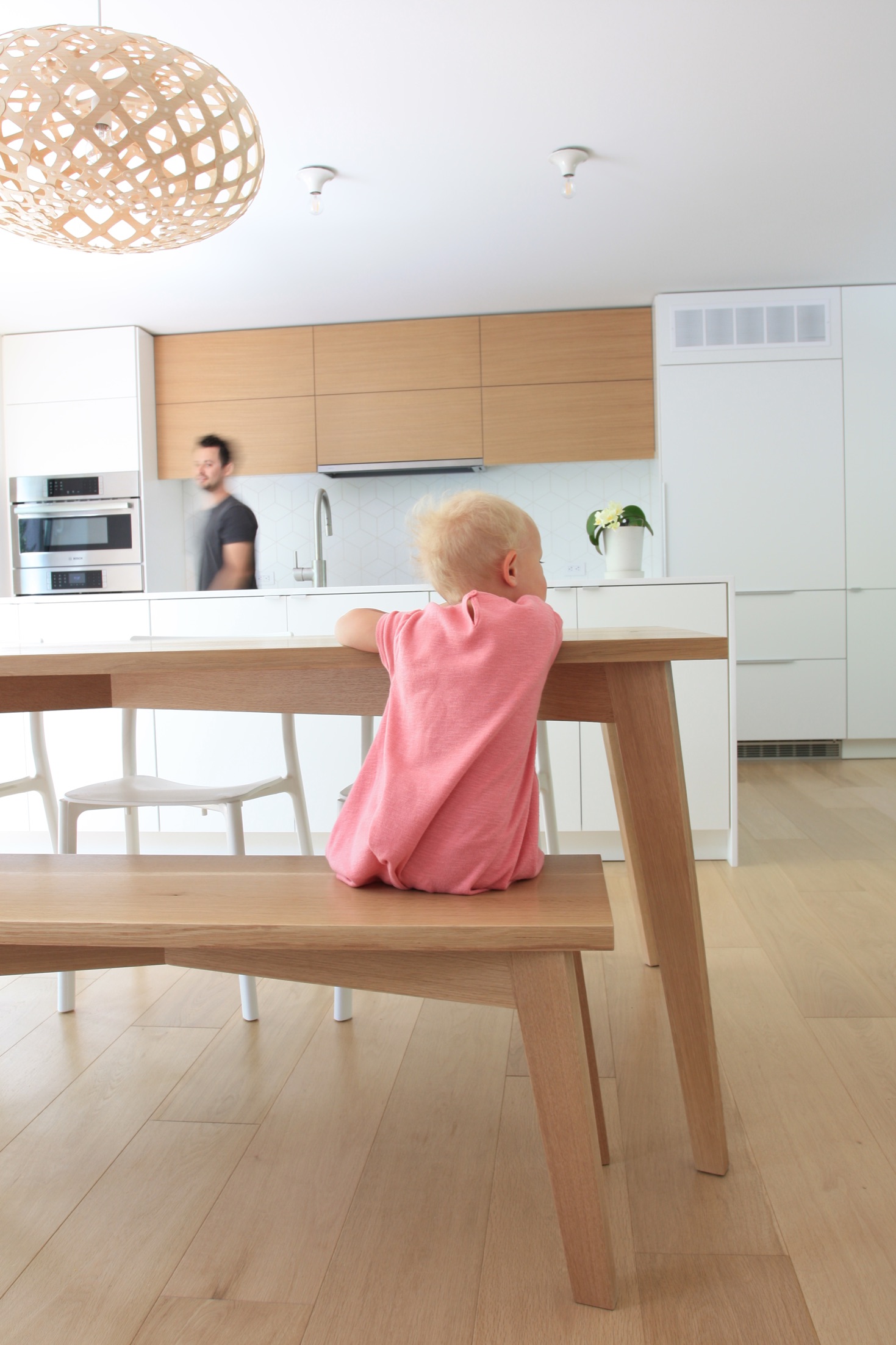Aunger Residence
Edmund Aunger completed a deep energy retrofit of his 1979 raised bungalow that made it net-zero.
| Building Type | Single-Family Bungalow | Location | Edmonton, AB |
| Year Built | 1979 | Foundation Type | Concrete (Full Basement) |
| Structure Type | Wood-Framed | Climate Zone | 7a |
| Heating Degree Days | 5120 | Retrofit Status | Complete |
| Retrofit Type | Envelope and Mechanical | Performance Level | Net Zero |
Project Team
- Edmund Aunger ( Homeowner )
Project Priorities
- Reduce Energy Consumption
- Achieve Net Zero or Net Zero Ready
- Increase Thermal Comfort
- Improve Indoor Air Quality
- Reduce GHG Emissions
Upgrades
- Exterior walls with improved airtightness and insulation
- New triple pane, fiberglass framed, high-efficiency windows and doors
- Added insulation in attic
- New cladding
- Insulation added to basement floor and walls
- New solar system
- Recirculating kitchen hood fan (ductless)
- High efficiency electric appliances
- Air Source Heat Pump with electric backup
Project Description
Planning the Retrofit
Edmonton, Alberta
Edmund Aunger followed these steps to complete this site-built deep retrofit:
- Gut the existing house, salvaging and selling most of the materials on Kijiji.
- Permanently remove the gas line.
- Cut off the roof overhangs and add OSB to fill the resulting holes.
- Complete plumbing, electrical, HVAC rough-ins as far as needed.
- Install the primary air barrier by wrapping the exterior of the house with Tyvek weather resistant barrier (WRB). Seal seams by overlapping the WRB with a continuous bead of acoustical sealant in between. Secure the seams with strips of OSB so they don’t pull apart over time. Seal around all penetrations with acoustical sealant or Siga tape.
- Add exterior framing to make room for exterior insulation. Use 2×6 horizontal framing and 2×4 vertical framing on the walls. Use 2×12 horizontal framing and 2×6 vertical framing on the roof.
- Install new triple pane, fiberglass framed, high-efficiency windows and doors and south-facing windows built to maximize solar gains.
- Fill new wall and roof cavities with mineral wool insulation.
- Install Tyvek weather resistant barrier.
- Install rainscreen framing using vertical 1×4 vertical strips and 1×4 horizontal strips to accommodate vertical siding.
- Install siding and roofing.
- Insulate interior cavities with mineral wool.
- Cover basement floors and walls with 1" rigid insulation with 1/4" gaps at the seams, and spray foam into the gaps to seal the seams.
- Frame basement interior walls on top of the rigid insulation.
- Seal wall penetration with acoustical sealant with backing or Siga tape.
- Install vapour barrier/secondary air barrier (6 mil poly). Be very careful that this is fully sealed.
- Finish the interior of the house taking care not to make holes through the vapour/air barrier. All screws going through the drywall must hit framing behind the poly.
- Install solar panels.
Other information:
- Install recirculating kitchen hood fan with no duct to the outside.
- Replace all lighting with LED.
- Replace all existing appliances with the high-efficiency electric appliances, including a heat-pump, condensing clothes dryer, and washer with a super-fast spinning cycle so clothes are nearly dry after wash.
- Replace old toilets with new low-flush toilets and install low-flow shower heads with pressure control valves.
Before & After
General |
Envelope |
Mechanical & Electrical |
Carbon Emissions* |
